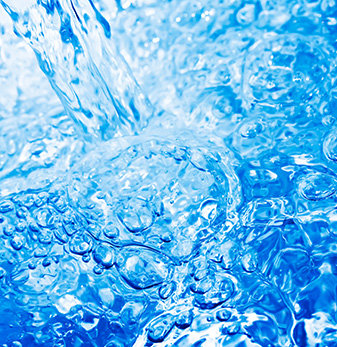The consulting engineer’s guide to pure water
High quality water is critical for many applications in the healthcare sector, in particular in renal dialysis units, sterile services departments and laboratories.
Ensuring that water quality meets the appropriate standards and that water purification equipment is specified, designed and installed correctly requires specialised knowledge and expertise.
Although this can seem a complex task for those with little experience of water purification processes, our aim with this web site is to guide you through the different technologies and standards, and to help you engineer effective solutions for your customers or partners.
This web site also contains a number of important resources to help you with project design, including an overview of the differences in water quality around the UK, the technologies required to purify water to various standards and an overview of the systems available.
Select the postcode where your project will be:

Water Quality
An adequate understanding of the quality of the mains water in the location of the project is essential to be able to specify and design any water purification system.
As a guide, the quality of potable water supplied throughout the UK can be broadly divided into three distinct categories, or zones. The chemistry of any supply will depend on the geology of the surrounding water catchment area, local environmental conditions and whether the supply is abstracted from an aquifer or is derived from a surface source such as a reservoir, loch or river.
- Zone 1 (Soft water / High organics)
-
Zone 1 applies to those areas of the UK where water is generally derived from a surface source such as a reservoir, river or loch. The underlying geology in these areas tends to be impervious to the percolation of rain water. These conditions result in a water supply that has a low mineral content, can be regarded as soft (due to the low levels of dissolved hardness salts of Calcium and Magnesium), but has a perceptable colour and high dissolved organic content.
Due to the source of water supplies categorised under this zone, their quality is subject to seasonal changes and is influenced greatly by rainfall, seasonal temperatures and the life cycle of many types of flora that can bloom for only a few months of the year, but could potentially affect applications if not accounted for in any proposed water treatment system design.
In general, the water supplied in Scotland can be classified under the category of Zone 1. It should be noted that current Scottish legislation states that it is the responsibility of all Scottish hospitals to filter their incoming mains water down to a level of 0.5 microns prior to distribution. This requirement is typically satisfied by the installation of either an ultra-filtration (UF) plant or membrane filtration (MF) system. Therefore, when specifying a new water purification system within a hospital in Scotland the degree of pre-treatment required will be influenced by whether or not UF or MF pre-treatment is already in place on the cold water supply.
- Zone 2 (Medium hardness / Medium organics)
-
The quality of water supplies that fall into Zone 2 are the most difficult to predict and quantify as their source can vary even daily depending on how local water authorities manage their reserves. Water under this classification can be drawn from a surface supply, an underground source or be a blend of both types, so the design of any water treatment system needs to be based on the worst case conditions.
The quality of potable water from Zone 2 can, therefore, fluctuate from Zone 1 quality to Zone 3 quality or exhibit a mixture of both types, e.g. High hardness and high organics.
Within this zone there exist localised “hot spots” where the organic quality of the source water can be exceptionally variable and typically colloidal in nature. Water treatment systems in these areas will generally require additional forms of pre-treatment, which could include the use of ultra-filtration as a means of reducing the level of colloidal organics.
- Zone 3 (High hardness / Low organics)
-
Potable waters classified under Zone 3 are usually the easiest to treat due to their consistency. They have the highest level of dissolved minerals and can be considered to be scale forming, but they also have the lowest potential to organically foul membranes and filters; this is due to their source being typically from boreholes or aquifers.
By virtue of the fact that rain water, being slightly acidic, is able to percolate through chalk, any dissolved organics and particulates are filtered out by the underlying geology. However, during this filtration process the acidic rainwater takes into solution a high concentration of Calcium and Magnesium salts which result in an increase in total water hardness.
Due to the depth from which water is abstracted from Zone 3 areas, they are generally protected from the influences of seasonal rainfall, temperature and biological activity and so the design of any water treatment system becomes more straightforward and less prone to being undersized in terms of purification processes.
To find out which zone the water supply for your project falls into, simply click here to go to a map showing the regional differences in water quality.
Water Standards
There are a number of officially recognised standards and guidelines that must be met for specific healthcare applications. It is crucial that these are taken into account when undertaking a project incorporating these operations.
The principal standards are listed below
